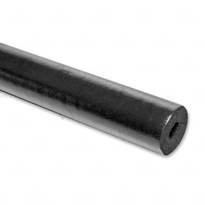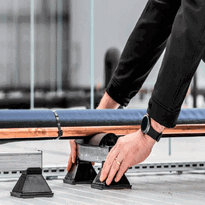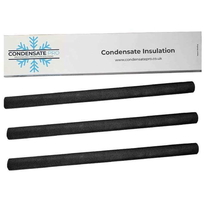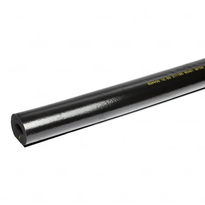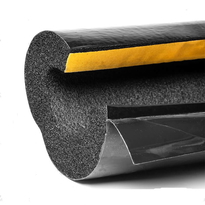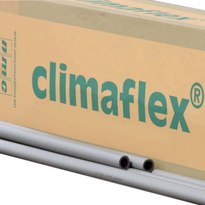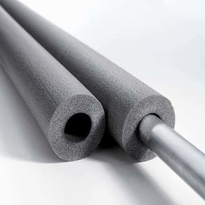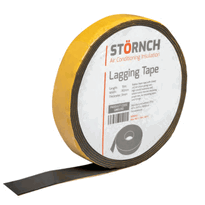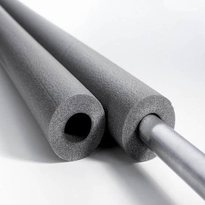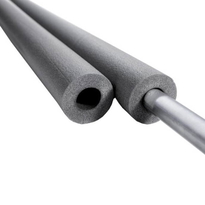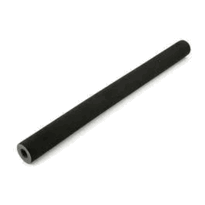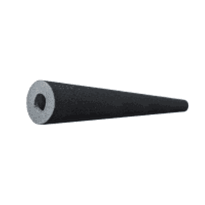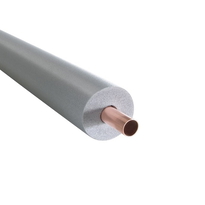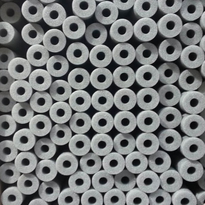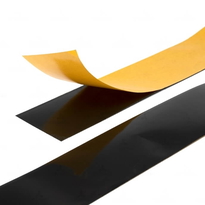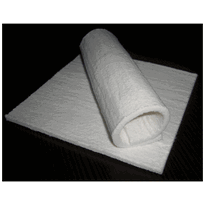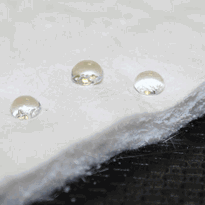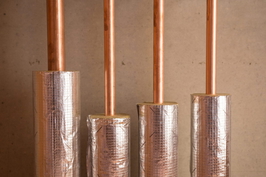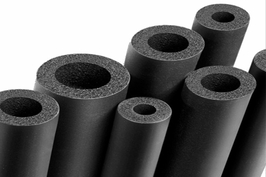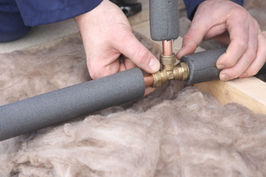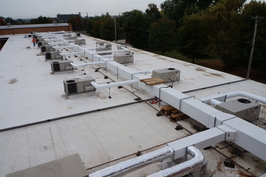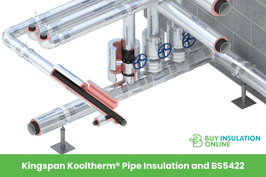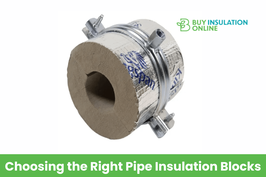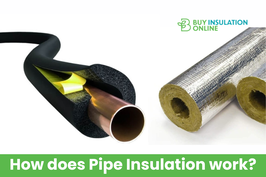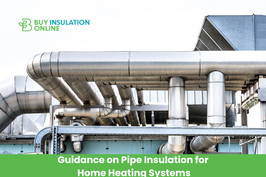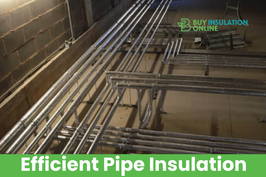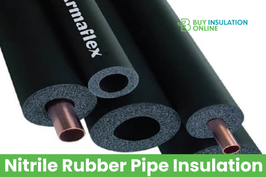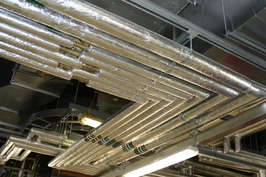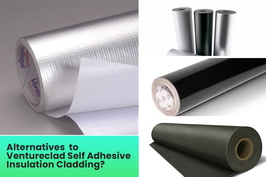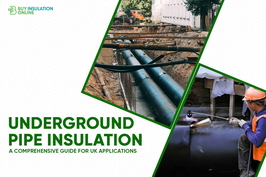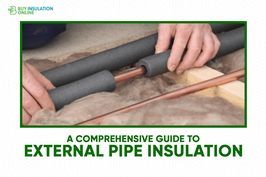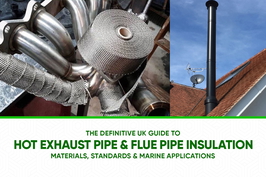Outdoor Pipe Covers
Outdoor pipe covers are designed to protect pipes from environmental damage, including adverse weather conditions, corrosion, and physical impacts. Commonly used materials encompass polyethylene, foam insulation, and fiberglass, all of which offer robust protection and effective thermal insulation.
These covers play a crucial role in preventing freezing, thereby reducing repair costs and enhancing energy efficiency. They often boast durable, weather-resistant designs and may incorporate additional insulation to withstand extreme conditions.
For those seeking long-lasting solutions, further exploration reveals how innovations in design and materials can significantly improve both durability and sustainability.
Types of Materials Used for Outdoor Pipe Covers
Outdoor pipe covers are available in a range of materials, each selected for specific attributes such as insulation, durability, and cost-effectiveness.
Polyethylene is a popular choice due to its lightweight nature, flexibility, and resistance to water. This makes it easy to install while effectively protecting outdoor pipes from moisture. Moreover, it can withstand environmental elements such as UV rays and rainfall, which contributes to prolonging the lifespan of the pipes.
Polyisocyanurate (Polyiso) provides exceptional thermal insulation and fire resistance, making it suitable for industrial settings where pipes may be exposed to high temperatures. It is often used in applications requiring high fire safety standards.
Foam insulation is both affordable and straightforward to install, making it a common choice for DIY projects involving both cold and hot water pipes.
Fibreglass and mineral wool offer high heat resistance, making them ideal for environments with elevated temperatures.
Polystyrene and cellulose present more budget-friendly options, with cellulose also being an eco-conscious choice, although it's less resistant to moisture.
Advantages of Using Outdoor Pipe Covers
Using outdoor pipe covers presents several significant advantages that contribute to the protection and maintenance of plumbing systems. These covers act as a barrier against moisture, air, and harmful chemicals that can lead to corrosion, thereby prolonging the lifespan of pipes and minimising the need for repairs.
One of the primary benefits is the prevention of freeze damage. By providing insulation, pipe covers help keep the water inside pipes warm, which significantly reduces the risk of costly bursts during cold weather.
Moreover, outdoor pipe covers play a vital role in reducing water waste. They help prevent leaks that may occur due to cracks or corrosion, ensuring that water is conserved effectively.
Safety is another important consideration. By minimising ice formation on pipes, these covers help eliminate slipping hazards on walkways, contributing to a safer environment for everyone.
Lastly, pipe covers enhance energy efficiency. They assist in retaining heat within hot water pipes, leading to lower heating costs and improved overall performance of plumbing systems.
Benefit |
Description |
| Corrosion and environmental damage | Shields pipes from elements that cause deterioration |
| Freeze damage prevention | Insulates pipes to avert freezing and bursting |
| Cost savings and efficiency | Reduces repair costs, maintenance, and energy expenses |
Common Design Features and Ratings of Pipe Cover Materials
The design features and ratings of pipe cover materials are crucial for ensuring their durability and effectiveness in outdoor applications. These materials include corrugated steel, high-density polyethylene (HDPE), and insulation composites. Corrugated steel covers provide varying thicknesses, which significantly influence their strength and load ratings. Thicker gauges are known for offering enhanced load-bearing capabilities. HDPE dual wall pipes are characterised by a smooth interior and a robust external shell. This design affords resistance to corrosion and abrasion while ensuring joint integrity, in accordance with established standards. Insulation covers typically feature a rigid outer shell complemented by inner thermal layers. This construction safeguards pipes against heat loss, condensation, and environmental damage. The selection of appropriate materials based on environmental conditions is vital for long-term durability. These attributes ensure that pipe covers endure constant exposure to the elements, heavy loads, and fluctuating weather conditions, thereby maintaining the safety and functionality of pipelines.
Factors to Consider When Installing Outdoor Pipe Covers
Before installing outdoor pipe covers, it’s essential to thoroughly evaluate the site conditions and environmental factors that could affect their performance.
Weather elements such as rain, snow, UV radiation, and extreme temperatures influence the choice of materials and installation methods. Wind load and potential impact hazards must also be considered to ensure that the covers remain securely in place.
Protecting pipes from animals, including rodents and insects, is crucial, as they can cause significant damage. Additionally, nearby vegetation or corrosive substances might accelerate material degradation, making the selection of resistant covers vital.
Assessing drainage patterns is important to prevent water accumulation, which can lead to freezing or corrosion. Proper installation involves secure anchoring, using suitable fasteners, and ensuring easy access for inspections or repairs.
Maintenance and Inspection Tips for Extended Lifespan
Regular inspection of outdoor pipe covers is essential for ensuring their effectiveness and extending their lifespan.
To maintain them in prime condition, homeowners should adhere to the following tips:
Inspect regularly for cracks, tears, or material deterioration that could weaken insulation.
Check for moisture or ice accumulation beneath the covers, as this may indicate potential sealing issues or inadequate insulation.
Examine attachment points such as ties and fasteners for looseness or damage, ensuring that covers remain securely in place.
In addition, clearing away debris, removing dirt, and trimming any nearby foliage can help prevent damage and maintain proper airflow.
During the winter months, it's crucial to drain pipes, disconnect hoses, and consider additional protection measures, such as heat tape.
Timely repairs or replacements of worn covers can avert costly damage and prolong the life of outdoor pipes.
Industry Applications for Outdoor Pipe Cover Solutions
Outdoor pipe covers are essential across various industries in the UK, providing protection for piping systems against environmental damage while ensuring operational safety.
In power stations and industrial facilities, these covers enhance energy efficiency by minimising heat loss in high-temperature pipes. They're constructed from resilient materials such as PVC and aluminium, which resist moisture, chemicals, and UV rays. Additionally, removable insulation covers allow for swift maintenance access, safeguarding valves and joints to maintain pipeline integrity. The durability of these materials ensures long-term performance even in harsh weather conditions.
In municipal water systems, pipe covers are crucial for preventing freezing and protecting components such as water meters and outdoor valves from harsh weather conditions.
The oil, gas, and chemical sectors benefit significantly from these covers, as they help maintain temperature control, prevent corrosion, and support compliance with safety regulations.
Furthermore, the construction and military sectors rely on robust, portable insulation solutions that deliver reliable performance under demanding outdoor conditions.
The importance of outdoor pipe covers can't be overstated, as they contribute to the longevity of piping systems and play a pivotal role in various industrial applications throughout the UK.
Cost and Budgeting for Effective Pipe Insulation
Costs for outdoor pipe insulation can vary significantly depending on the material selected. Foam insulation tends to be the most cost-effective option, while fiberglass insulation is generally more expensive. Fiberglass insulation offers higher thermal resistance, which can lead to increased energy savings over time, potentially offsetting the higher initial cost. Installation and maintenance costs also play a crucial role in the overall budget, particularly when specialised fittings or weather-resistant materials are required. Understanding these factors is essential for planning a budget that effectively balances initial expenses with potential long-term savings. This approach not only ensures proper insulation but also contributes to energy efficiency and reduced heating costs over time.
Material Selection Costs
Choosing the appropriate insulation material for outdoor pipes requires careful consideration of cost, performance, and long-term value. The expenses associated with different materials can significantly influence your overall budget.
Here are some essential points to keep in mind:
Foam insulation is the most cost-effective option available, making it ideal for projects with tight budgets. EPS runs ~8 cents/R-ft f.o.b. distributor's lot; ~10 cents/R-ft installed. Rubber insulation falls into a mid-range price category, offering excellent flexibility alongside resistance to mould and moisture.
Fibreglass insulation, while generally affordable, can vary in price depending on its thickness and type. It often necessitates additional weatherproofing for outdoor applications. Fibreglass costs vary by density and installation method; outdoor use may require a protective coating or covering
Installation and Maintenance Expenses
Installing pipe insulation requires careful consideration of both labour and material expenses to remain within budget.
Labour costs can vary significantly, depending on the complexity of the installation and its location. Professionals typically charge varying rates per square foot, with higher charges for more intricate jobs. The cost of labour can also be affected by regional wage differences. While hiring a professional may increase costs, do-it-yourself installation can reduce labour expenses but carries the risk of improper insulation, which can lead to further issues down the line.
Materials such as foam are often among the most affordable options, while other types like fibreglass or specialised insulation can be considerably more expensive.
Maintenance costs can arise from exposure and wear over time, necessitating periodic inspections and repairs to ensure efficacy.
Proper planning for these expenses is essential to ensure long-lasting and effective outdoor pipe insulation while remaining within a sensible budget.
Innovations and Trends in Outdoor Pipe Cover Technologies
Recent advances in outdoor pipe cover technologies are revolutionising the protection and monitoring of piping infrastructure. Innovations now include the integration of IoT sensors, which provide real-time data on pipe conditions and environmental factors, greatly enhancing maintenance and safety measures.
Moreover, smart communication capabilities within pipe covers can initiate predictive maintenance alerts, which help to avert expensive failures. The development of advanced materials is also pivotal in this evolution.
For instance:
Intelligent, temperature-responsive materials offer enhanced protection against varying weather conditions.
Water leak detection systems are essential for preventing structural damage and ensuring safety.
Automated shutoff mechanisms are designed to activate immediately upon detecting faults or leaks.
These advancements render pipe covers more durable, energy-efficient, and environmentally friendly. They foster a sense of community safety, as residents can feel reassured knowing that their infrastructure is both smarter and safer.
Recent research in material science has led to the development of eco-friendly options that reduce environmental impact while maintaining durability. The ongoing trend is geared towards creating more sustainable and efficient piping systems for the future.
Conclusion
In summary, outdoor pipe covers serve to protect pipes from adverse weather conditions and help prevent freezing during colder months. Selecting the appropriate material and design is crucial for ensuring durability and effectiveness.
Proper installation, coupled with regular maintenance, can significantly extend the lifespan of these protective covers. Staying informed about advancements in technology also plays a vital role in optimising their performance.
Understanding these essential factors ensures that pipes remain secure and functional, thereby reducing the likelihood of costly repairs and avoiding disruptions. Ultimately, investing in high-quality outdoor pipe covers provides reliable protection against the diverse weather conditions often experienced in the UK.
